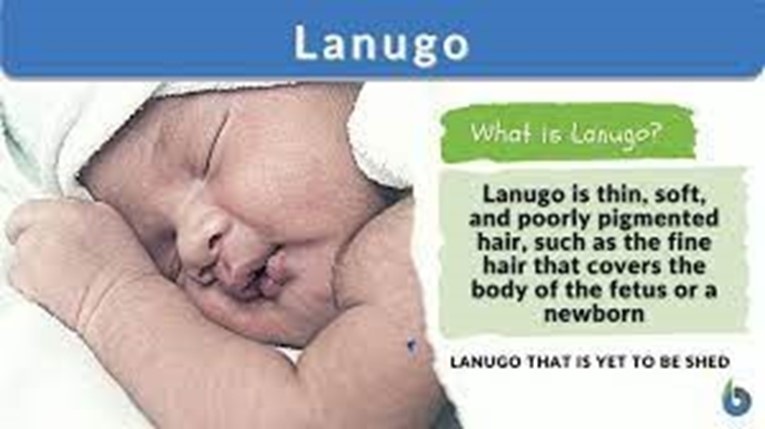A nurse is caring for a client who is postpartum. The nurse should recognize which of the following statements by the client as a possible indicator of inhibition of parental attachment?
"I don't need the bath demonstration. I know how to do it.".
"Do you think you could keep him in the nursery for the next feeding so I can get some sleep?.".
"I just wish he had more hair. I'm going to have to keep a hat on his head till he grows some.".
"He's got my husband's nose, that's for sure.".
The Correct Answer is C
Choice A reason:
This statement does not indicate inhibition of parental attachment. The client may have prior experience or knowledge of bathing a newborn and may not need the demonstration. The nurse should respect the client's autonomy and confidence in this skill.
Choice B reason:
This statement does not indicate inhibition of parental attachment. The client may be exhausted from the labor and delivery process and may need some rest to recover. The nurse should support the client's request and ensure that the newborn is well cared for in the nursery.
Choice C reason:
This statement indicates inhibition of parental attachment. The client expresses dissatisfaction with the newborn's appearance and implies that the newborn is not attractive enough. The nurse should explore the client's feelings and expectations about the newborn and provide reassurance and education about normal variations in newborn features.
Choice D reason:
This statement does not indicate inhibition of parental attachment. The client recognizes a family resemblance in the newborn and expresses a positive connection with the newborn and the partner. The nurse should acknowledge the client's observation and encourage further bonding with the newborn.
Nursing Test Bank
Naxlex Comprehensive Predictor Exams
Related Questions
Correct Answer is ["A","B","D"]
Explanation
Choice A:
Document fundal height. This is a correct action because the nurse should monitor the involution of the uterus by measuring the fundal height and comparing it to the expected level. The fundus should descend about one fingerbreadth (1 cm) per day after delivery and be at the level of the umbilicus immediately after birth.
Choice B:
Observe the lochia during palpation of the fundus. This is a correct action because the nurse should assess the amount, color, and consistency of the lochia (vaginal discharge) during the fundal massage. The lochia should change from rubra (red) to serosa (pink) to alba (white) over time and not increase in amount or revert to a previous stage.
Choice C:
Massage a firm fundus. This is an incorrect action because a firm fundus indicates adequate uterine contraction and involution. Massaging a firm fundus can cause discomfort and bleeding for the client. The nurse should only massage a boggy (soft) fundus to stimulate contraction and prevent hemorrhage.
Choice D:
Determine whether the fundus is midline. This is a correct action because the nurse should check if the fundus is deviated to either side, which may indicate a full bladder. A full bladder can interfere with uterine contraction and cause bleeding or infection. The nurse should assist the client to void if the fundus is not midline.
Choice E:
Administer terbutaline if the fundus is boggy. This is an incorrect action because terbutaline is a tocolytic drug that relaxes the uterine muscle and inhibits contractions. It is used to stop preterm labor, not to treat postpartum hemorrhage. The nurse should administer oxytocin or other uterotonic drugs if the fundus is boggy and does not respond to massage.
Correct Answer is C
Explanation
Choice A reason:
Hypertonia is not a characteristic of a preterm infant, but rather of a post-term infant. Hypertonia means increased muscle tone or stiffness, which is more common in infants who are overdue. Preterm infants have poor muscle tone and less subcutaneous fat.
Choice B reason:
Long toenails are also not a characteristic of a preterm infant but of a post-term infant. Long toenails indicate that the infant has grown beyond the expected gestational age. Preterm infants have short and brittle nails.
Choice C reason:

Lanugo is a characteristic of a preterm infant. Lanugo is fine, downy hair that covers the body of the fetus. It usually disappears by the 36th week of gestation, but preterm infants may still have it at birth.
Choice D reason:
Dry skin is not a characteristic of a preterm infant but of a post-term infant. Dry skin indicates that the infant has lost moisture and subcutaneous fat due to prolonged exposure to the amniotic fluid. Preterm infants have thin and transparent skin that may be covered by vernix caseosa, a white, cheesy substance that protects the skin from the amniotic fluid.
Whether you are a student looking to ace your exams or a practicing nurse seeking to enhance your expertise , our nursing education contents will empower you with the confidence and competence to make a difference in the lives of patients and become a respected leader in the healthcare field.
Visit Naxlex, invest in your future and unlock endless possibilities with our unparalleled nursing education contents today
Report Wrong Answer on the Current Question
Do you disagree with the answer? If yes, what is your expected answer? Explain.
Kindly be descriptive with the issue you are facing.
